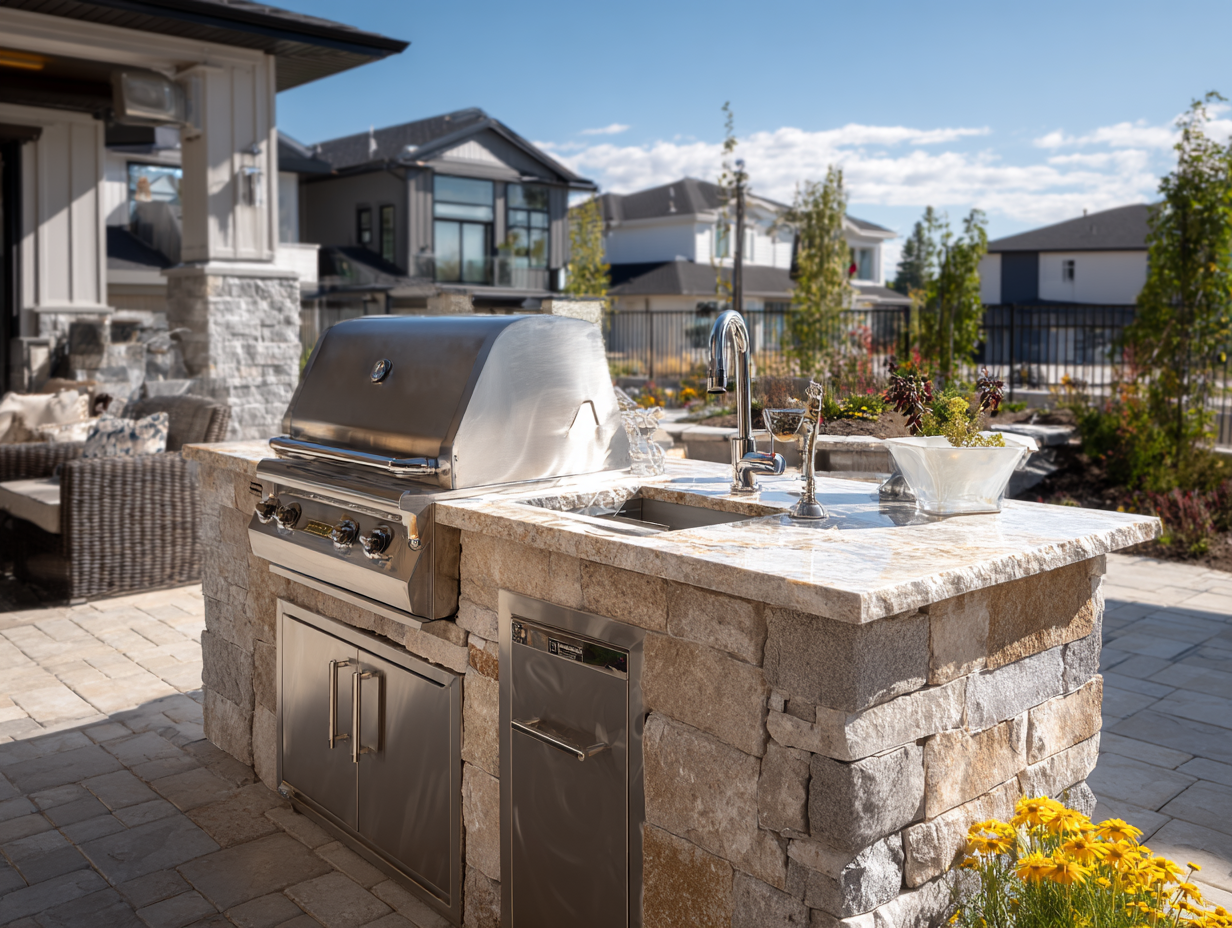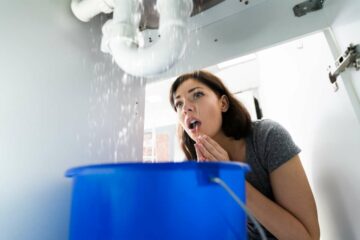Why Outdoor Kitchen Plumbing Matters
A backyard grill on a rolling cart is easy. A full outdoor kitchen with a sink, prep counter, fridge, and side burner is a different story. Water, drainage, gas, and frost protection all have to meet code and still look sharp when your guests arrive. After nearly 40 years of plumbing in the Okanagan, here is what we tell homeowners before we run the first pipe.
1. Outdoor Kitchen Water Supply and Shut-Off Valves
Running a hose across the patio might work for one weekend, but permanent supply lines are safer and cleaner.
Key points
- Use PEX-A or Type L copper rated for outdoor temperature swings.
- Add a quarter-turn ball valve where the line leaves the basement so you can winterize in minutes.
- Insulate exterior runs that pass through unheated walls.
2. Outdoor Kitchen Drainage: Sinks and Patio Runoff
Grey water from an outdoor sink still has to exit legally.
- Where grade permits, tie the sink into your home’s waste system with a two-inch line and a code-approved vent.
- If the patio is lower than the house drain, plan for a small lift pump rated for grease-laden waste.
- Slope patio surfaces away from the house and toward a channel drain to keep splash-back from reaching the foundation.
Learn more about leak detection and drainage
3. Backflow Prevention for Outdoor Kitchens
Garden hoses left in buckets or sinks can siphon contaminants into your drinking water.
- A vacuum breaker on every hose bib is the bare minimum.
- For a built-in irrigation or outdoor kitchen line, install a dedicated backflow preventer and arrange for annual testing as required by many Okanagan municipalities.
4. Sizing Outdoor Kitchen Gas Lines for Grills and Ovens
Side burners, pizza ovens, and grills often share one gas manifold. Undersized lines cause weak flames and appliance lockouts.
- Use ¾-inch gas pipe for runs over eight metres feeding multiple appliances.
- Support pipe every five feet and protect it where it passes through masonry.
- Add a keyed shut-off valve within six feet of each appliance for quick servicing.
Always obtain a gas permit and pressure test the line before back-filling.
5. Weather-Proof Plumbing Materials for Outdoor Kitchens
Outdoor counters and cabinets must survive forty-degree heat and sub-zero winters.
- Stainless or marine-grade polymer cabinets resist moisture and sun.
- Stone or concrete counters need waterproof membranes at all plumbing penetrations.
- Flexible stainless steel connectors prevent hard copper from snapping if frost heaves the patio.
6. How to Winterize Your Outdoor Kitchen Plumbing
The first freeze can split a copper stub in under an hour.
- Shut the supply valve, open the outdoor taps, and let them drain.
- Disconnect and store cartridge-style filters and inline chillers indoors.
- Pour a litre of RV antifreeze into the drain trap so it does not crack.
- Set a phone reminder for early October and you will never forget.
Frequently Asked Questions for Building a Outdoor Kitchen
Keep Your Outdoor Kitchen Running All Summer
Vision Plumbing Heating Cooling handles the plumbing and gas line layout, installation, and maintenance for outdoor kitchens across Kelowna, West Kelowna, Peachland, and Summerland. From frost-proof water lines to code-compliant gas hookups, we make sure your outdoor space is ready for every cookout.
Book an outdoor kitchen consultation and start grilling with confidence.




